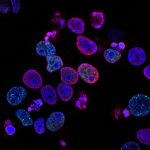The International Journal of Research Oncology recently published a paper which assesses the impact of Tumour Treating Fields on progression patterns in Glioblastoma. The lead researchers on this paper were Martin Glas, Matthew T. Ballo and Ze’ev Bomzon who each brought unique and varied backgrounds to the analysis.
What is the treatment?
Tumour treating fields is a treatment that utilises alternating electric fields that target cancer cells in the brain without affecting normal cells. The electric fields are used to divide the cancer cells and therefore slow the progression of tumour growth.
The most well-known example of tumour treating fields as a treatment is Optune, which is a battery powered device that is worn on the head like a hat or cap and distributes the electrical waves non-invasively and with little discomfort to the patient.
You can read more about Optune on our alternative treatments page for GBM.
What were the findings? 
The research team found there was a correlation between the use of tumour treating fields and the response of the tumour, with ‘improved clinical outcome’ in patients that had this treatment. The study determined that there was rationale to use high doses of the electrical fields where the targeted tumour had a high risk of progression, even stating that the treatment is worth utilising after progression occurs as well.
Data on the effectiveness continues to be collected for the use of Optune and tumour treating fields but it still remains one of the more expensive treatment options for the glioblastoma community.
If you would like to use your experience and insight to support clinical research, consider signing up to be a PRIME advocate for brainstrust.
If you or someone you love is living with a brain tumour and have any questions around this latest news, or want to access support, give us a call on 01983 292 405 or email hello@brainstrust.org.uk. You can also visit our little brainstrust website which features support for children affected by brain tumour.





